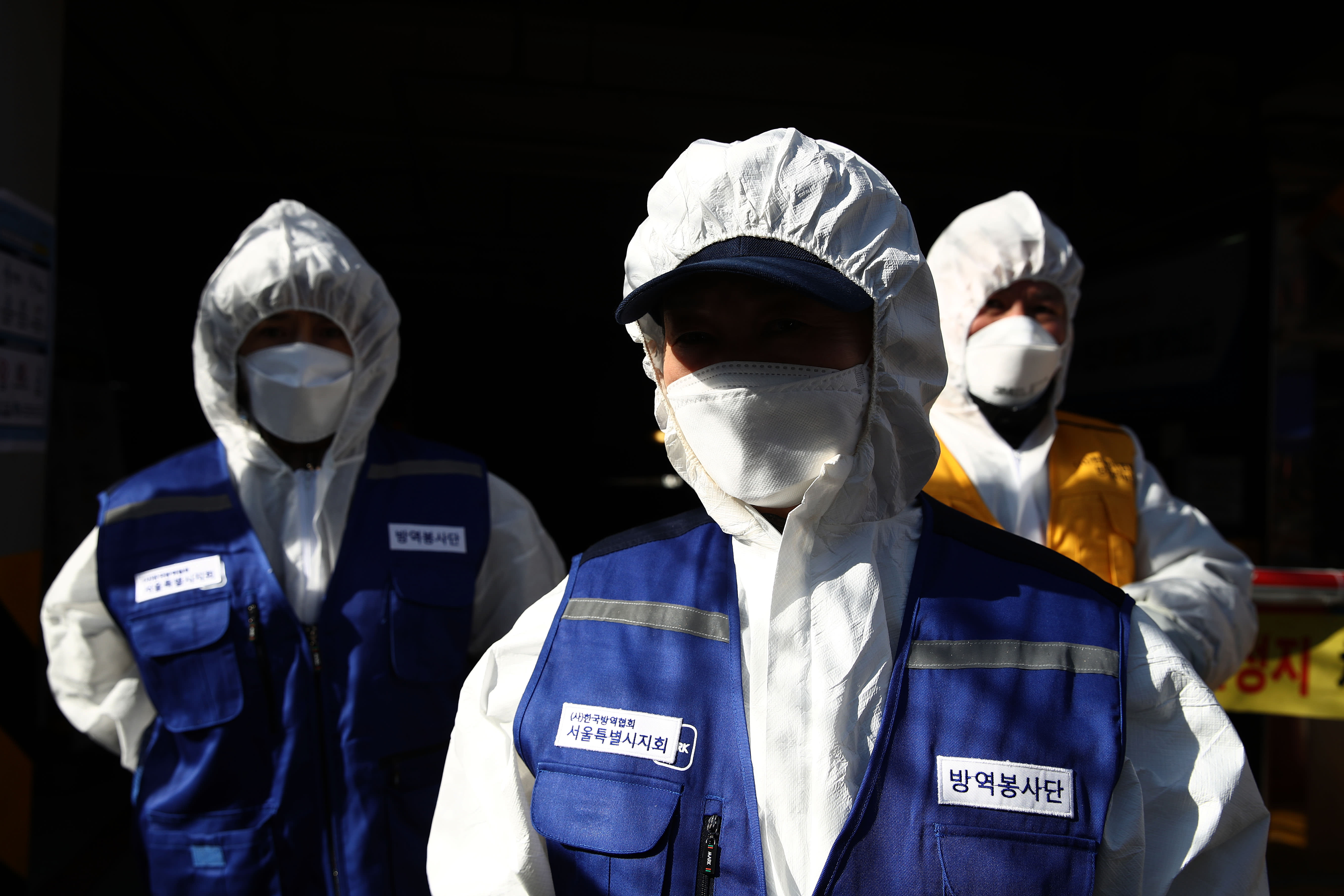
Disinfection workers wearing protective gears and prepare to disinfect against the novel coronavirus in Daerim Central Market, a neighbourhood with one of the largest Chinese population on February 05, 2020 in Seoul, South Korea.
Chung Sung-Jun | Getty Images
“There’s still a lot we don’t know,” Tedros Adhanom Ghebreyesus, director-general of the World Health Organization, said Thursday of the coronavirus outbreak that has spread to more than 28,000 people and killed 565 since its discovery in Wuhan, China, about five weeks ago.
While scientists have made progress in sequencing the virus’s DNA and generally know how it is transmitted, he said they still don’t know the source of the outbreak or its natural host, have a vaccine or treatment, “and we don’t properly understand its transmissibility or severity.”
“To put it bluntly, we’re shadow boxing,” Tedros said at a news conference at the agency’s headquarters in Geneva. “We need to bring this virus out into the light so we can attack it properly.”
WHO is convening a two-day global research and innovation forum next week to share research and ideas on how to combat the virus, he said.
Tedros has pleaded for “solidarity” among member countries, including asking for donations to help with outbreak response efforts.
WHO said it tapped $9 million from its contingency fund for emergencies and sent medical supplies such as masks, gloves, gowns and diagnostic tests around the world. The agency is requesting $675 million to fund WHO operations and outbreak support.
So far, the agency has received donations from the Bill and Melinda Gates Foundation and from Japan, Tedros said. WHO expects more announcements on funding in the “coming days,” he said.
“Every dollar counts,” Tedros said.
Since emerging in Wuhan about a month ago, the virus has spread from about 300 people as of Jan. 21 to more than 28,000 — with the number of new cases growing by the thousands every day.
The virus appears to be particularly troublesome for older people and those with underlying health conditions, health officials said. Symptoms can include a sore throat, runny nose, fever or pneumonia and can progress all the way to multiple organ failure or death in some severe cases, they said.
Dr. Mike Ryan, executive director of WHO’s emergencies program, said Thursday that it’s “too early” to know when the virus will peak, adding that “we need to be very careful on making any predictions.”
Ryan said the overall number of confirmed cases in China dropped in the last day for the first time since the outbreak began.
“It doesn’t mean anything, but at least we’re not going in the wrong direction,” he said. “There are cycles of transmission, and we may see those cases increase in the coming days, but at least for the moment, things are stable.”
Many public health officials across the world have questioned the accuracy of China’s data.



